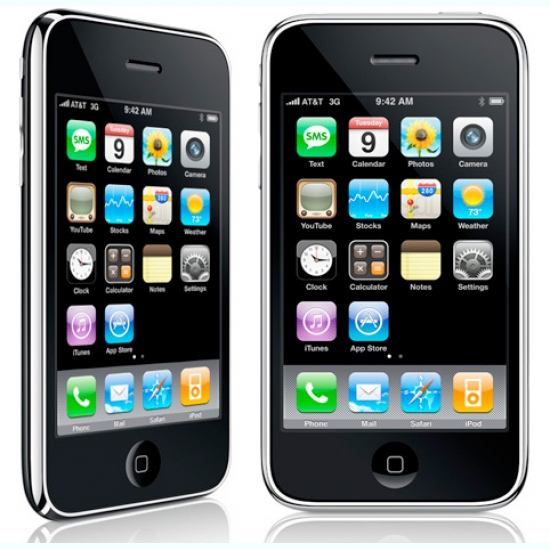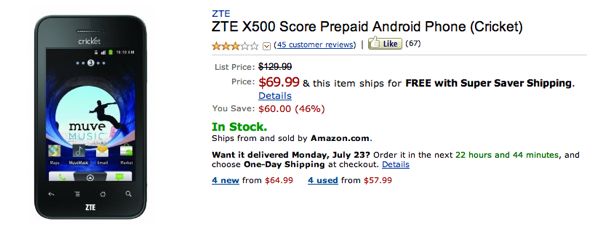In case you’ve been wondering, the three-year old iPhone 3GS still has life left in it and should live on through the release of the next iPhone. Matter of fact, the handset has just been slashed on India’s seventh-largest Aircel network to just Rs 9,999, which works out to approximately $180 with an advanced commitment of ~$55 for a year, for a total upfront cost of $235 for an unsubsidized device.
Apple of course recently began offering the iPhone 4/4S through a bunch of regional U.S. carriers, most notably Cricket and Virgin Mobile, on a pre-paid basis with month-to-month plans. But with iOS 6 coming this fall to the iPhone 3GS, Apple’s entry-level iPhone is now working its way down to the low-end of the market dominated by Android cheapos…
According to an IBN Live story:
To grab this deal customers will need to pay advance rental of Rs 3,000 in addition to the cost of the phone which will offer them 2 GB unlimited (after 2 GB at a slower 128 Kbps speed) plan for 12 months in 3G circles, and in circles where only 2G network is available users will get 1000 mins local and STD calls and 2500 local and national SMS along with unlimited 2G data for 6 months.
The only catch is that the plan is available only for the postpaid users. While the plan is more attractive for people where Aircel has 3G network is available but never the less 2G offer also seems exciting.
Analyst Peter Misek wrote as much in a note to clients back in May, insisting that Apple was working out a deal with a major global distributor that would roll out the iPhone 3GS at a reduced price to a bunch of developing countries.
The note said Apple was looking for ways to penetrate the pre-paid and developing markets by bringing down the iPhone 3GS at the wholesale level from $375 to the $200 to $250 range.
With Aircel, we’re now seeing the wholesale levels for the iPhone 3GS dropping below Misek’s $200-$250 range. That’s Apple taking a more aggressive stance against a sea of basic prepaid Android handsets from non-branded vendors that sell below $99.
Some examples: the $99 Virgin/Sprint LG Optimus V Android 2.2 phone, a $70 contract-free ZTE X500 and Samsung’s Galaxy Mini that sells for $188.
Why is prepaid important?
Because not everyone can afford a $200+ smartphone with a pricey plan and because in many European and Asian markets phones are purchased separately of the wireless service.
Another reason why Apple is suddenly interested in the prepaid market: dirt cheap prepaid Android phones last holiday reduced the iPhone to a single-digit share in countries without carrier subsidies, like Greece (bad example, I know), Portugal and Southern European markets where carriers are hesitant to fork out billions in upfront subsidies.
The Wall Street Journal quoted IDC, back in January:
In the U.S., where contract plans and phone subsidies dominate, IDC says that around 90% of smartphone shipments over the past four years were for devices that cost more than $300 — despite the recession and uncertain recovery.
In Italy, where prepaid plans dominate, that proportion was 67% last year, and in crisis-hit Greece and Portugal, only about 40% of the smartphones shipped in 2011 cost more than $300.
Taking into account that the iPhone’s Q4 2011 share in Greece and Portugal fell to nine and four percent, respectively, it’s not surprising that Apple is addressing the situation.
Amazon sells the ZTE X500 Score, a prepaid Android 2.3 phone on Cricket, for just $70.
I should perhaps mention that entry-level Android 2.2/2.3 phones don’t come close to matching the smoothness and sleekness of the iPhone 3GS with iOS5/6 installed.
The only downer?
The iPhone 3GS does not FaceTime and lacks a few iOS 6 features supported by latest iPhones, though Apple changes its mind and enabled some capabilities, most notably Shared Photo Streams and VIP inbox, on the 3GS in the latest iOS 6 Beta 3 build.
Wrapping up, it remains to be seen how the markets in developing countries respond to the $200 iPhone 3GS, especially when Firefox OS smartphones begin hitting mid-to-low-end of the market and first-time smartphone buyers in emerging markets.
According to Jeff’s hands-on with Firefox OS (screenshots here), though still rough around the edges, Mozilla’s beta software takes the best design principles of both iOS and Android to create an environment customers can easily and quickly familiarize themselves with.
[tube]5mjHIs2G0IE[/tube]
What do you think, is the three-year old iPhone 3GS for $200, prepaid and running iOS 6, a better deal than an Android 2.2 or 2.3 smartphone?
Or perhaps the iPhone should remain a high-end play?


